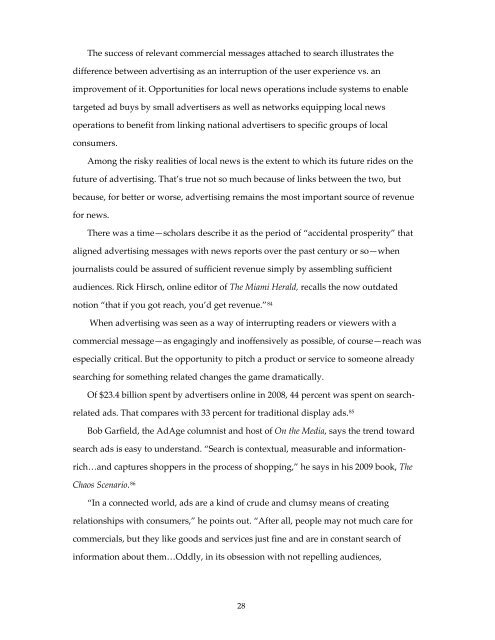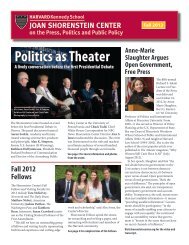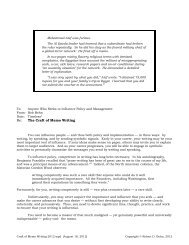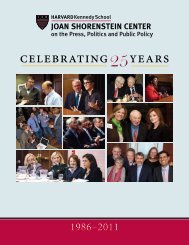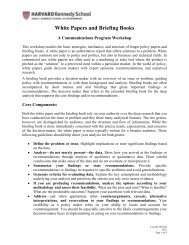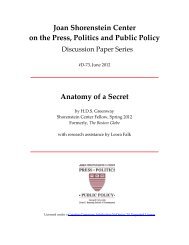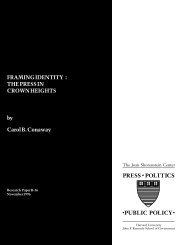A User-First Framework for Sustaining Local News - Harvard ...
A User-First Framework for Sustaining Local News - Harvard ...
A User-First Framework for Sustaining Local News - Harvard ...
You also want an ePaper? Increase the reach of your titles
YUMPU automatically turns print PDFs into web optimized ePapers that Google loves.
The success of relevant commercial messages attached to search illustrates the<br />
difference between advertising as an interruption of the user experience vs. an<br />
improvement of it. Opportunities <strong>for</strong> local news operations include systems to enable<br />
targeted ad buys by small advertisers as well as networks equipping local news<br />
operations to benefit from linking national advertisers to specific groups of local<br />
consumers.<br />
Among the risky realities of local news is the extent to which its future rides on the<br />
future of advertising. That’s true not so much because of links between the two, but<br />
because, <strong>for</strong> better or worse, advertising remains the most important source of revenue<br />
<strong>for</strong> news.<br />
There was a time—scholars describe it as the period of “accidental prosperity” that<br />
aligned advertising messages with news reports over the past century or so—when<br />
journalists could be assured of sufficient revenue simply by assembling sufficient<br />
audiences. Rick Hirsch, online editor of The Miami Herald, recalls the now outdated<br />
notion “that if you got reach, you’d get revenue.” 84<br />
When advertising was seen as a way of interrupting readers or viewers with a<br />
commercial message—as engagingly and inoffensively as possible, of course—reach was<br />
especially critical. But the opportunity to pitch a product or service to someone already<br />
searching <strong>for</strong> something related changes the game dramatically.<br />
Of $23.4 billion spent by advertisers online in 2008, 44 percent was spent on search‐<br />
related ads. That compares with 33 percent <strong>for</strong> traditional display ads. 85<br />
Bob Garfield, the AdAge columnist and host of On the Media, says the trend toward<br />
search ads is easy to understand. “Search is contextual, measurable and in<strong>for</strong>mation‐<br />
rich…and captures shoppers in the process of shopping,” he says in his 2009 book, The<br />
Chaos Scenario. 86<br />
“In a connected world, ads are a kind of crude and clumsy means of creating<br />
relationships with consumers,” he points out. “After all, people may not much care <strong>for</strong><br />
commercials, but they like goods and services just fine and are in constant search of<br />
in<strong>for</strong>mation about them…Oddly, in its obsession with not repelling audiences,<br />
28


